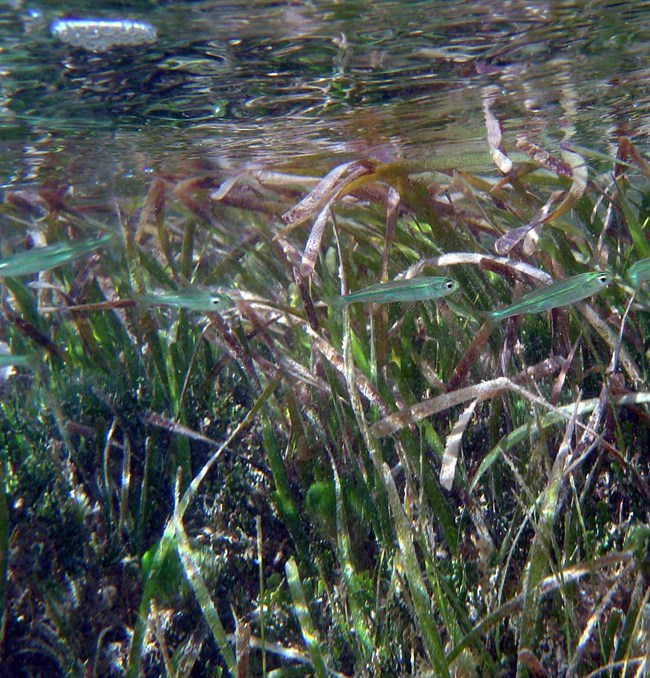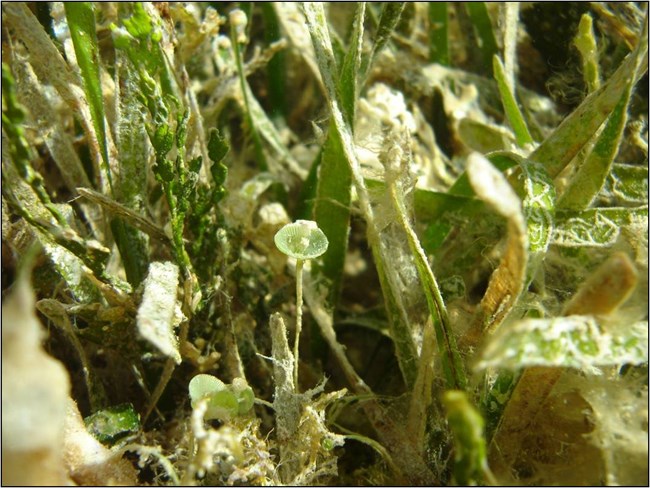
Seagrasses form important ecosystems in coastal areas around the world. They are highly productive and rich in biodiversity. Seagrass ecosystems provide nursery habitat for small fishes and invertebrates, and food for a wide variety of animals. They stabilize sediments and help maintain water clarity.
Other seagrass species include star grass (Halophila englemanni) and paddle grass (Halophila decipiens). Acanthophora spicifera Acetabularia calyculus Acetabularia crenulata Acetabularia schenckii Amphiroa compressa Anadyomene stellata Batophora occidentalis Batophora oerstedii Caulerpa lanuginosa Caulerpa mexicana Caulerpa paspaloides Caulerpa prolifera Caulerpa racemosa Caulerpa sertularioides Chondria baileyana Cladosiphon occidentalis Digenea simplex Halimeda copiosa Halimeda goreaui Halimeda incrassata Halimeda monile Halimeda tuna Laurencia gemmifera Laurencia intricata Laurencia poitei Lobophora variegata Neogoniolithon spectabile Neomeris annulata Penicillus capitatus Penicillus dumetosus Penicillus pyriformis Porolithon pachydermum Rhipocephalus phoenix Sargassum fluitans Sargassum natans Sargassum pteropleuron Spyridia filamentosa Stypopodium zonale Udotea conglutinata Udotea dixonii Udotea flabellum Ventricaria ventricosa Wrangelia penicillata 
Seagrass Epiphytes Seagrass leaves are colonized by tiny organisms called epiphytes. Seagrass epiphytes are extremely diverse and include microalgae, macroalgae, bacteria, byrozoans, fungi, sponges, hydroids, crustaceans, and molluscs. Algal epiphytes are photosyntetic and contribute to the primary production of the ecosystem. Most of the larger fish and invertebrate consumers in seagrass ecosystem feed on seagrass epiphytes. Few organisms feed directly on seagrass leaves. |
Last updated: February 28, 2017
